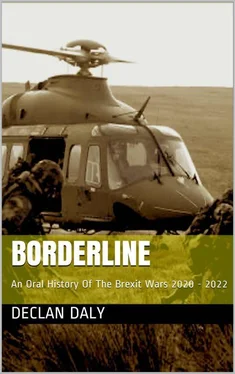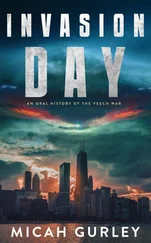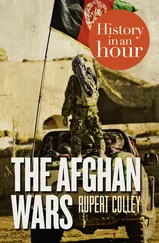External Action 1
By the late start of spring 2021, the conversation on ‘who’ was supplying the groups in Northern Ireland had changed to ‘how’. There was now little question that direct Russian support was being given to various factions. There was also little doubt that the desired end state was one of internal violence and war. The spillover into Ireland was not the priority, just a nice bonus from the point of view of the Kremlin. This pattern fit with previous Russian actions in Eastern Europe and it’s cyberwarfare elements dovetailed almost exactly with it’s efforts during the Brexit Campaign and the US presidential elections, to name the two most familiar to english speakers.
The pattern by now was clear – agitate civil unrest through online campaigns and the strategic application of pressure to key speakers, stoke these embers into violence, escalate that violence through the provision of material and sometimes barely clandestine military support and then de-escalate when the opportune moment presented itself and Russian interests were served. This didn’t mean the violence would stop, just that it would return to a previous level that somehow felt less bad now, and which the international community would accept as the new status quo, thereby averting all out war. But Ireland was not the ‘Near Abroad’, not one of the countries on the periphery of old Tsarist and Soviet Empires that Russia saw as places where their own needs trumped the domestic ones. There was no longstanding ethnic Russian minority that they could work through or intervene to ‘protect’, thereby forcing them to find other proxies.
Most crucially, however, there was no land border. You could not walk from Moscow, or even Kaliningrad to Ireland with a rifle on your back. You could not drive Buk surface to air missiles across a frontier and then deny their existence. Simply put, creating an insurection in Northern Ireland and then supporting it created logistical problems for Russia. Fortunately, from their perspective, patterns of behaviour had already been established that allowed them to move large shipments of weapons and ammunition onto the whole island with only a little sleight of hand. It appears that several different approaches were taken, depending on the phase of the war.
◆◆◆
Phase One – Nothing to see here.
This phase can be said to have run from sometime in 2019 to the start of the Black Winter. During this phase, supply efforts of materials was generally accomplished by sea. With the well publicised personnel problems of the Naval Service preventing thorough patrolling of the littoral domain, this was the lowest hanging fruit and the easiest way to move significant volumes quickly. It was also an easy way to move people off island without moving through airports during the initial Covid-19 crisis, but more of that later. The lack of available ships coupled with the Irish Air Corps having only two maritime patrol aircraft at the time, and the RAF none, all combined to provide the Russian state with a discrete and effective method of dealing with its logistical problems.
It is guessed that approximately half of all weapons supplied came ashore at this time, not in ports like Killybegs, but on the barren and remote strands and rocky beaches of Irelands most northerly county, Donegal. There is some tantalising evidence to suggest that a Kilo class submarine even entered Lough Swilly to either off load weapons or people, but this seems unlikely as a regular supply route and if it did happen, was probably a one off experiment given that drawing increased attention to submarine activity in that area, would by default have highlighted their operations around the sub sea fibre optic cabling south west of Kerry. In any case, once hostilities commenced and comparatively large numbers of sailors, aircrew and technicians re-entered the Defence Forces these coastlines became far more intensively patrolled during Operation Saltmine, the combined arms effort to prevent the landing of weapons in Ireland by sea.
Occuring simultaneously with this phase was the building up of proxy forces, including both dissident republican and unionist forces. Obviously, each group was trained unknown to the other. This involved the removal from Ireland, initially by normal commercial flights and later by sea of those people who had been either groomed and radicalised online, or who were volunteers from their respective community. The key ingredient in their selection was that they must never have come to the attention of the authorities before for any kind of sectarian or poilitically inspired activities. This was found to be more difficult than expected, based on reports from captured prisoners from both sides of the Northern Irish community.
This was because, as has previously been stated, there was no real support in each community for a return to violence. This meant that not only would the normal networks of safe houses, small arms dumps and information gathering not be available to them, but, to mangle an analogy of guerrilla warfare, these fish would be swimming in a shallow and hostile sea, not one disposed to their success. This lack of available personnel was so much of a problem, that it is now suspected, in some quarters, that the arming of the IRA was in part down to the fact that it was taking longer than expected to train a suitable number of future insurgents; and the clock on Brexit and its associated political tensions was ticking. They needed a dog in the fight and the IRA would do until their own pups grew up.
This fact, if it is indeed a fact, greatly influenced the future progression of the war. Instead of taking away an entire ‘army’ in one fell swoop for training, the Russians were forced to train each cohort of one hundred to two hundred people, and then rely on them to point towards who they believed would be suitable for the next training cohort. Republicans were enticed with the ‘one last push’ argument, that the chaos of Brexit would provide the clear path to a united Ireland, whilst unionists were recruited with the exact opposite position: arm up now or be over taken in the near future demographically and by a border poll. Critically however, each community in Northern Ireland had only a comparitively small and very much finite amount of people who were willing to take up arms against the wishes of their own people.
This carrying capacity, the amount of people predisposed to act this way that exists in any society, meant that the republican effort was already split – some of those who might have joined the Russian backed dissidents were already in action on the border with the IRA and were eventually lost to the republican side altogether.
These factors, a long but clandestine supply line, personnel invisible to the security services and a sectarian divide that was further split on the republican side heavily influenced the future path of the war that was so, so different than the Troubles. But that was yet to come.
◆◆◆
Phase two – Air Superiority
This phase can be said to extend from the start of Operation Saltmine in November 2020 and continue until the French truly got a handle on their QRA tasks in the Northwest. There were not smoothly defined breaks between phases and to some extent they may both be still ongoing. As Operation Saltmine ramped up its scrutiny on the Irish maritime domain on the backs of existing, new and returning Defence Forces personnel, it became clear that logistical resupply by surface vessel was increasingly likely to be detected. Fortunately for the Russian, dissident and unionist forces, when Brexit slams a door it opens a window. This window was the withdrawal of British air policing from Irish airspace during the Black Winter as the political impasse developed and grew worse. Intended to cause pressure on Ireland, it did, but ultimately proved to be an own goal as well. The French offer to replace the RAF came almost immediately, but the jets took longer.
Читать дальше












